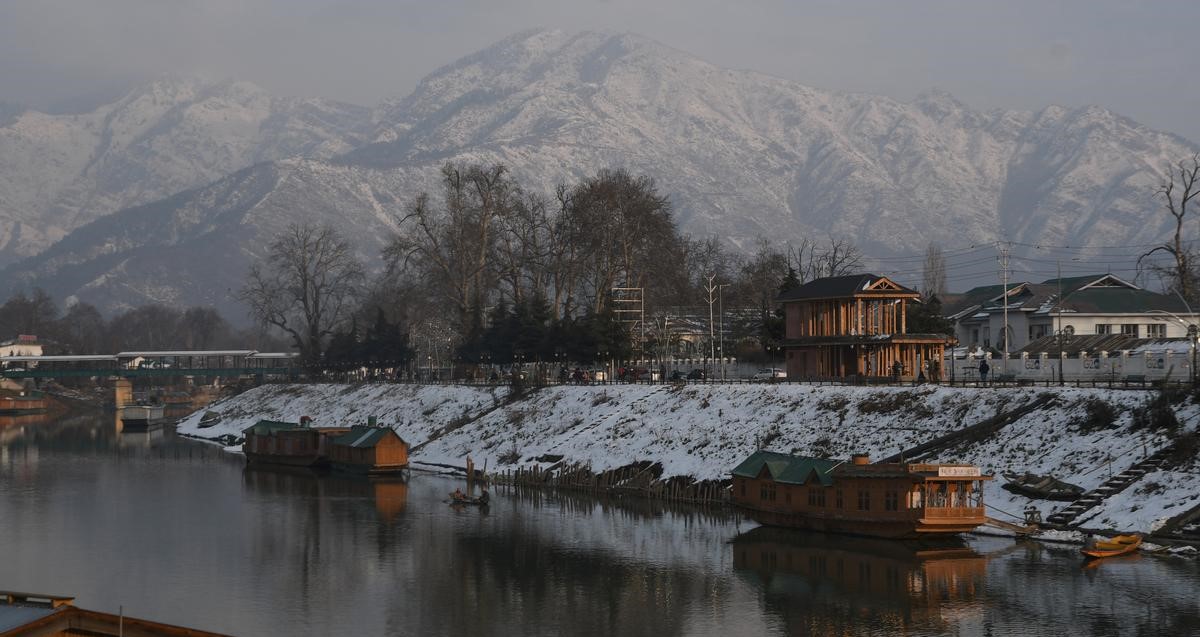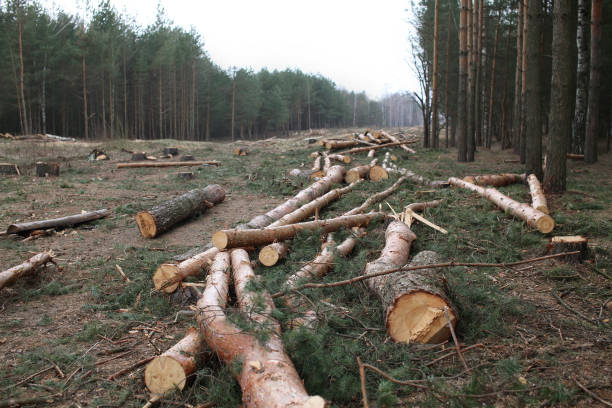Kashmir Cold Wave Deepens: December Snowfall, Sub-Zero Nights & Winter Outlook Explained
By: Javid Amin | 27 November 2025
Winter Arrives Early in the Valley
Kashmir is once again slipping into its enchanting yet unforgiving winter rhythm. As November fades, the sun sets earlier, Chinar leaves carpet the pathways in deep crimson, and the icy breath of the Himalayan winds turns each evening sharper than the last. This year, however, the cold wave has arrived with unusual intensity and ahead of the traditional Chillai-Kalan — the harshest 40 days of winter in Kashmir.
From Srinagar’s –4.4°C freeze to Zojila’s bone-numbing –16°C, the region is experiencing temperatures far colder than the seasonal average for November and early December. Light snowfall in the upper reaches, frost-coated mornings, and widespread freezing across South and North Kashmir are early hints of a winter shaping up to be harsher, longer, and meteorologically significant.
This article breaks down why the cold wave has intensified, what the December outlook holds, and how life, tourism, agriculture, and travel are being reshaped by these icy conditions. The aim is to provide a detailed, verified, and environmentally grounded perspective on the evolving season.
The Winter Transition: What November Revealed About Kashmir’s Climate Rhythm
01. The Late-November Chill: How It Started
According to the Meteorological Centre Srinagar, temperatures began nosediving right after November 5 due to a prolonged dry spell across the region. With no clouds to trap the day’s heat, Kashmir’s nights cooled rapidly — a natural phenomenon known as radiative cooling.
This led to:
-
Consecutive sub-zero night readings in Kupwara, Shopian, and Pahalgam
-
Sharp windchill across central Kashmir
-
Reduced daytime warmth despite clear skies
The cold wave wasn’t merely a passing phase — it marked the official shift from autumn’s warmth to winter’s severity.
02. First Snowfall in the Higher Reaches
Early November brought the season’s first scattered snowflakes to:
-
Gulmarg
-
Sonamarg
-
Kupwara highlands
-
Pahalgam upper belts
-
Zojila and its adjoining ridges
These early flurries, though light, confirmed what meteorologists had predicted — Kashmir was heading into one of its colder early winters in recent years.
03. The Fade of the Golden Autumn
Kashmir’s famed Harud (autumn) is brief but breathtaking. What made the transition to winter more noticeable this year was the speed with which the Valley’s golden autumn dissolved:
-
The last Chinar leaves fell earlier than usual
-
Dal Lake’s waters grew quieter as shikara traffic reduced
-
Mughal gardens saw thinner tourist numbers
-
Morning fog crept in by late November
The environment itself signaled the arrival of deep winter, long before temperatures officially confirmed it.
Deep Freeze: Current Temperature Scenario Across J&K and Ladakh
The cold wave gripping Kashmir and Ladakh has produced some of the lowest readings of the season — and in some areas, the lowest in several years.
Here is the latest verified data:
Srinagar: –4.4°C
The capital recorded its coldest night yet. Frozen taps, icy windshields, and slippery roads have become common early-morning challenges.
Shopian: –6.5°C
Known for its orchards and hilly terrain, Shopian is among the coldest districts right now.
Pulwama: –5.8°C
Local markets open late and close early as people try to avoid the sharp morning and evening cold.
Baramulla: –5.9°C
North Kashmir continues to record deep sub-zero nights across many areas.
Pahalgam: –4.4°C
The tourist town is now wrapped in frost, with morning fog hovering over the Lidder river.
Kupwara: –3.4°C
The district’s temperature swing is less severe during the day but freezing at night.
Zojila Pass: –16°C
One of the coldest inhabited and traversed points in the region — travel routes remain dangerous due to frost and black ice.
Leh: –8.5°C
The Ladakh region, naturally colder, is witnessing typical early-winter lows.
Why Is the Cold Wave So Intense? Understanding the Causes
01. The Prolonged Dry Spell
Meteorologists largely attribute the cold wave to ongoing dry weather conditions. Without clouds or moisture in the air:
-
Heat escapes during the night
-
Air cools rapidly
-
The ground loses warmth faster
This leads to the kind of bone-cold nights Kashmir is witnessing now.
02. Radiative Cooling Under Clear Skies
Kashmir’s geography — a bowl-shaped Valley surrounded by mountains — makes it particularly susceptible to radiative cooling. Once the sun sets:
-
Warm air rises
-
Cold air sinks and settles
-
The Valley floor freezes faster than the mountainsides
This natural process is more intense during dry spells.
03. Approaching Chillai-Kalan
Chillai-Kalan begins on December 21 and lasts till January 31.
These 40 days are historically the coldest and most challenging period of winter in Kashmir.
An early cold wave before this period often signals:
-
A colder-than-usual Chillai-Kalan
-
More intense frost during late December and January
-
Lower day temperatures
Temperatures dropping this early are a classic precursor.
04. Lack of Precipitation
While IMD predicts snowfall next week, the ongoing lack of precipitation has only amplified the cold.
Moisture in the air usually:
-
Raises night temperature
-
Prevents extreme heat loss
-
Maintains some atmospheric warmth
Without snow or rain, temperatures fall unchecked.
December Outlook: What the Coming Weeks Hold for Kashmir
01. Frosty Starts to December
As the month begins, Kashmir wakes to:
-
Frost-covered roofs and windowpanes
-
Meadow grass shimmering in ice crystals
-
Frozen water buckets in rural homes
-
Dal Lake partially forming ice sheets on the fringes
These frosty mornings will intensify through mid-December.
02. Snowfall Expectations in Gulmarg & Higher Reaches
Fresh snow has already started accumulating on Gulmarg’s:
-
Phase 1 ski slopes
-
Kongdoori range
-
Afarwat peak
The resort is expected to receive multiple snow spells through December, ideal for:
-
Skiing
-
Snowboarding
-
Gondola rides
-
Early winter tourism
Sonamarg, Pahalgam upper belts, and the Gurez valley are likely to experience similar accumulation.
03. Temperature Trends for December
Srinagar
-
Lows near: –2°C to –5°C
-
Highs near: 10–12°C
Gulmarg & Pahalgam
-
Lows: –4°C to –7°C
-
Highs: 3–5°C
Kupwara, Baramulla, Pulwama
Expect a consistent freeze through the month.
Overall, December 2025 is on track to be colder than average.
The Human Side of Winter: Lifestyle Shifts Across the Valley
01. Families Prepare for the Deep Cold
Homes across the Valley adjust to winter’s arrival through:
-
Stocking of kangris (traditional firepots)
-
Washing and airing winter bedding
-
Storing firewood or gas cylinders
-
Installing plastic sheets on windows to block cold air
-
Switching to winter diets — soups, dried vegetables, harissa, and kahwa
The rhythm of life slows but gains warmth and community spirit.
02. Kangris and Pherans Return to Daily Life
No Kashmiri winter is complete without these twin symbols:
Kangri
A clay firepot encased in wicker, used to keep warm for hours. It becomes a lifeline from December to February.
Pheran
The long traditional woolen robe that shields against the harshest wind chills.
Their use sees a dramatic rise as temperatures fall.
03. Shorter Days and Longer Nights
December shortens daylight hours considerably. People adjust:
-
School and office timings shift earlier
-
Outdoor work reduces
-
Public movement drops after sunset
-
Markets close sooner
Daily routines become calmer and more inward-focused.
Impact on Schools, Health & Transport
01. Schools Announce Early Winter Vacations
Due to the extreme cold, especially in South Kashmir, authorities have already declared early winter breaks for several classes. This helps protect children from:
-
Frostbite
-
Respiratory infections
-
Morning cold exposure during travel
02. Health Concerns Rise
Doctors across Kashmir warn of:
-
Influenza-like illnesses
-
Pneumonia among children and elderly
-
Hypothermia cases in poorly insulated homes
-
Increased risk of carbon-monoxide poisoning from gas heaters
Hospitals typically see a sharp spike in winter-related ailments.
03. Travel Disruptions at Zojila and Mughal Road
Zojila’s –16°C freeze has caused:
-
Dangerous black ice
-
Vehicle skidding incidents
-
Temporary closure of the pass
-
Restricted movement of trucks
Similar disruptions are reported on Mughal Road and Bandipora–Gurez routes.
Tourism: A Slowdown Followed By a Winter Boom
01. End of Autumn Crowds
Post-November, tourist numbers drop sharply in Srinagar, Pahalgam, and Sonamarg.
This creates a quieter, more serene Valley perfect for:
-
Slow travel
-
Photography
-
Nature retreats
02. Gulmarg Takes Center Stage
December marks the beginning of Gulmarg’s world-famous ski season.
The Resort expects:
-
Heavy footfall from adventure travelers
-
Strong bookings for Christmas and New Year
-
High demand for skiing lessons and gondola rides
Winter tourism is one of Kashmir’s biggest economic boosts.
03. Travel Tips for December Visitors
Tourists are advised to:
-
Carry multiple warm layers
-
Use waterproof shoes with grip
-
Travel early in the day
-
Expect flight delays due to fog
-
Carry backup power banks & heaters
Winter in Kashmir is magical, but preparedness is essential.
Environmental and Climate Observations
01. Is Kashmir Getting Colder Earlier?
Data in recent years shows a subtle shift:
-
Early cold waves
-
Late or concentrated snowfall
-
Longer dry spells
-
Short but intense wet periods
This suggests the Valley is experiencing increasing climate variability.
02. Snowfall Patterns Are Changing
Instead of steady snow, Kashmir now gets:
-
Dry Novembers
-
Heavy January snow
-
Unpredictable February rain-snow mix
Such changes affect agriculture, water availability, and tourism cycles.
03. Impact on Flora & Fauna
Winter changes affect:
-
Migratory birds arriving earlier at Hokersar & Wular
-
Orchard chill-hour accumulation
-
Survival patterns of local wildlife
-
River and spring discharge levels
Environmental monitoring through the coming months is crucial.
The Road Ahead: What the Next Few Weeks May Bring
IMD forecasts suggest:
-
Snow and rain expected in the coming week
-
Temperature relief after precipitation
-
Another dip during late December
-
Intensified cold around the start of Chillai-Kalan
Travel challenges may increase, but snowfall will also restore moisture and bring relief from the harsh freeze.
Bottom-Line: Kashmir Settles Into the Heart of Winter
Kashmir’s cold wave is not merely a weather event — it’s the onset of an entire seasonal rhythm that shapes life, culture, travel, nature, and the environment. With Srinagar dipping to –4.4°C, Zojila freezing at –16°C, and Gulmarg preparing for snow-rich adventures, the Valley is poised for a deep, beautiful, and challenging winter.
As December unfolds, frost will thicken, snowfall will paint the mountains white, and the Valley will embrace its time-honored rituals — kangris glowing, pherans swaying, kahwa simmering, and people adjusting to the serene silence winter brings.
This winter promises to be unforgettable — in both beauty and intensity.



